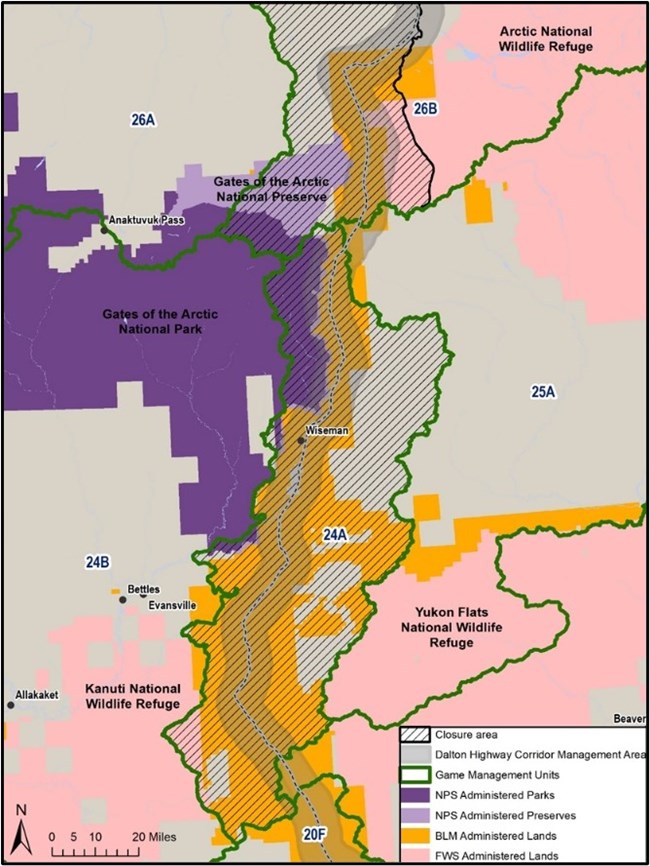Subsistence Hunting
When this vast park area was created in 1980, Congress protected the traditional subsistence rights of local rural residents through the Alaska National Interest Land Conservation Act (ANILCA). Subsistence use is defined as: Customary and traditional uses by rural Alaska residents of wild, renewable resources for direct personal or family consumption as food, shelter, fuel, clothing, tools or transportation; for the making and selling of handicraft articles out of non-edible by-products of fish and wildlife resources taken for personal or family consumption; for barter, or sharing for personal or family consumption; and for customary trade.
To be eligible to hunt, fish, or trap under federal subsistence regulations in Gates of the Arctic National Park, you must be a rural Alaska resident with a positive customary and traditional use determination for the species and area you wish to hunt, fish, or trap, and live either in a resident zone community or inside the park boundary, or have a 13.440 subsistence use permit.
To be eligible to hunt, fish, or trap under federal subsistence regulations in Gates of the Arctic National Preserve, you must be a local rural resident. This is any person who maintains their primary permanent home in or near the preserve.
To trap wildlife in the park or preserve under federal subsistence regulations, you must have a state trapping license and comply with federal subsistence trapping regulations.
Today, as in the past, many Alaskans live off the land, relying on fish, wildlife and other wild resources. Alaska’s natural abun-dance forms the backbone of life and economy for many people in the state, and indigenous people in Alaska have used these subsistence resources for food, shelter, clothing, transportation, handicrafts and trade for thousands of years. Subsistence, and all it entails, is critical to sustaining the physical and spiritual culture of Alaska Native peoples and to making life on the land possible for many of Alaska’s rural residents.
Ten villages in and around the park and preserve have the right to subsistence hunt, fish and trap within the park. Please respect and do not disturb subsistence activities and sites.
For more information on subsistence, please visit our Subsistence page.

